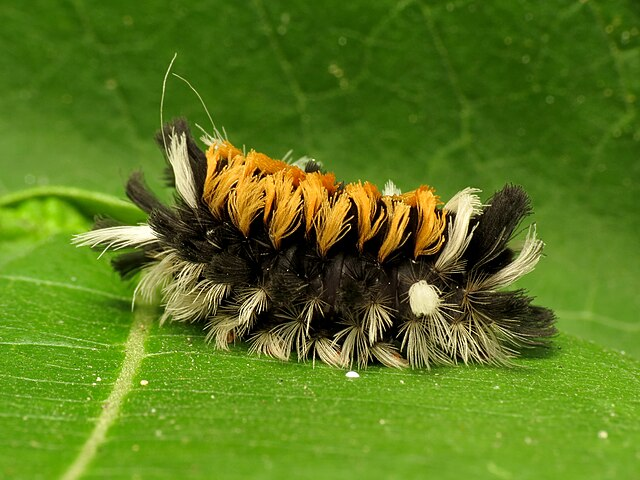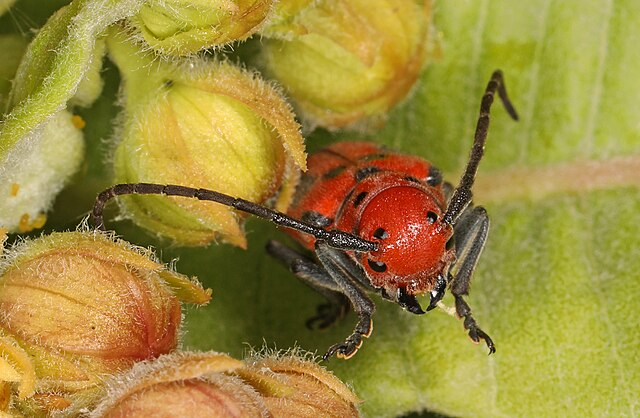Monarch Butterflies: Killing Them With Kindness
- Jace Porter
- Dec 20, 2024
- 4 min read
Updated: Dec 23, 2024

Monarch butterflies hold a special place in the hearts of nature lovers and conservationists alike thanks to their beauty, ecological contributions, educational value, and awe-inspiring migration across North America. With the recent spotlight on their declining populations, and the US Fish and Wildlife Service's proposal of listing the monarch butterfly as a threatened species under the Endangered Species Act (ESA), you likely see many articles on how you can help at home.
This is fantastic! However, as with any well-intentioned efforts, it’s essential to ensure that our actions truly benefit them—and the ecosystems they inhabit.
Here are some key do’s and don’ts that some of the other pages might not mention to make sure your efforts support monarch butterflies without causing unintended harm.
Avoiding The Monarch Blinders
A common cultural pitfall that conservationists face is what we like to call "Monarch Blinders." People plant milkweed—a critical host plant for monarch caterpillars—with the sole purpose of aiding monarch populations. While this is a great way to help in your own backyard, many will adopt a philosophy of "This is a Monarch-only zone!" When milkweed patches are treated as monarch-exclusive, all too often do we hear stories of other species being killed or removed in favor of monarchs. Remember: milkweed is not a monarch-exclusive plant, and fostering biodiversity is key to a healthy environment. There are lots of insects and other wildlife that rely on milkweed for survival as well. Competition among co-existing native species is a natural and healthy process, as it maintains checks and balances that support biodiversity. Over generations, competition dynamics are helpful to ensure that Monarch caterpillars and other insects continue to be adaptable, strengthening an an ability to thrive in an ever-changing environment.
The following two insects are often eradicated in favor of the monarch, but we ask you to let them have their share as well;
Milkweed Tussock Moth (Euchaetes egle):
These beautiful, gregarious furry caterpillars serve as a food source for birds, wasps, and other predators, contributing to a balanced ecosystem. By feeding on milkweed, these caterpillars are also recycling nutrients, and contributing to soil health with their shed exoskeletons and frass (poop).
Red Milkweed Beetle (Tetraopes tetrophthalmus):
These striking beetles play a role in pollination and, like the milkweed tussocks previously mentioned and most insects, serve as food source for birds, wasps and other predators. They are part of the broader milkweed-dependent community. Did we mention they can vocalize? They will give cute little chirps or squeaks if handled.
What to do:
Plant native milkweed species that thrive in your region, ensuring a natural habitat for all its dependent insects.
Let nature take its course; resist the urge to control or sanitize your milkweed patch. All insects that rely on milkweed contribute to its ecological health.
What not to do:
Do not use pesticides, herbicides or fungicides.
Do not remove other species from milkweed.
Captive-reared Monarchs:
Another well-meaning but potentially harmful practice is raising monarchs (or other insects) in captivity for release into the wild. The idea sounds simple: more butterflies equal more chances for survival. But here’s the catch:

Weak Adaptations: In captivity, monarchs are shielded from natural pressures like predators, diseases, and weather. This lack of environmental stress can result in individuals that are less robust and adaptable to the wild. They may hold a genetic predisposition to be unable to withstand these common environmental pressures, thus....
Risk to Wild Populations: When captive-raised monarchs are released, they can introduce predisposition to disease, inability to avoid predation, increased risk of parasitism, and/or other genetic weaknesses to the wild population, undermining their natural resilience.
Poor Navigational Abilities: There are studies that have shown that some captive bred monarchs actually lack the navigational abilities to migrate.
Wild insects thrive because they’ve adapted to their environment over many generations. By bypassing these natural forces, we’re not helping monarchs; we’re weakening their ability to survive future challenges.
What to do:
Focus on providing habitats rather than rearing monarchs in captivity.
Support conservation efforts that prioritize habitat restoration and preservation.
What not to do:
Avoid raising monarchs in controlled environments for release. It’s tempting, but it can do more harm than good.
That said, raising monarchs or other native, non-threatened species in captivity for educational purposes can be incredibly rewarding. Instead of releasing them into the wild, consider creating a closed environment where they can thrive and complete their life-cycle. Provide food, mates, and enrichment to sustain a population within captivity. This approach not only prevents potential ecological risks but also allows you to observe multiple generations, deepening the educational experience.
In Summary
The best way to help monarchs (and all insects) is by creating and protecting habitats where they can thrive naturally with their native neighbors. Insects need environmental stimuli to build strength, adaptability, and resilience. A more hands-off approach allows monarchs and other insects to overcome challenges, ensuring that only the strongest traits are passed to future generations.
Steps to Support Monarchs the Right Way:
Plant native: Besides milkweed, it's always good to incorporate many other native plants, flowering or not, into the mix. Because again, biodiversity is the key to healthy ecosystems.
Avoid chemical interference: Ditch the pesticides and herbicides to maintain a naturally healthy and resilient habitat.
Support wild spaces: Advocate for conservation policies that protect natural habitats and reduce human encroachment.
Educate others: Share knowledge about the importance of biodiversity and the risks of well-meaning but harmful practices like captive raising.
Insects Thrive on Challenges
As humans, it’s natural to want to help—especially when faced with stories of declining monarch populations. But the best help we can give is by fostering diverse habitats, respecting natural processes, and avoiding over-intervention. With these in mind, we can ensure a brighter future for monarchs, the insects and the ecosystems they call home.













Comments